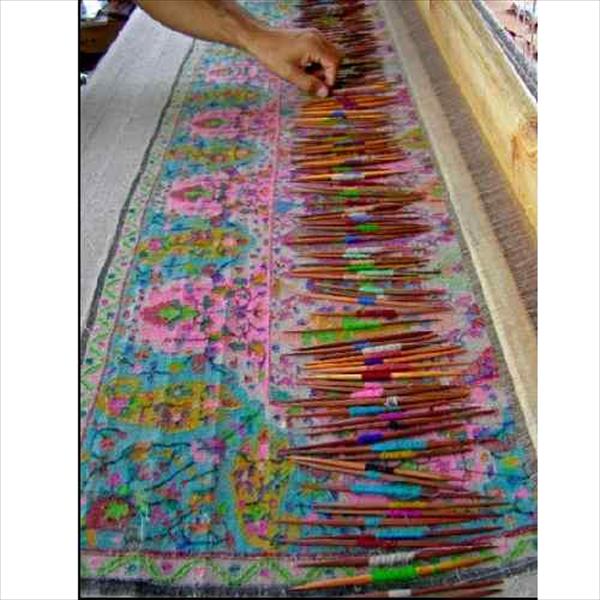Kani Shawls dying a slow & sure death
As is so imminent in every sense, Kashmir is known for its art and crafts. Be it papier mâché, wood work, stone carving, metal work or the traditional shawl weaving and embroidery work, the ingenuity and craftsmanship of the local populace has been globally lauded.
Kanihama, a small village on Srinagar-Gulmarg highway is the serene abode of Kani Shawls, a craft which demands patience, practice and great amount of skill in order to write mastery over a piece of special cloth. The village was earlier known as ‘Gund Karhama’ until it became famous for its Kani Shawls and hence the name ‘Kanihama’ stuck to it.
History recalls that it was the zeal and effort of Shah-i-Hamadan (RA), a 14th century Islamic preacher, that the art reached Kanihama. Sultan Qutub-udDin, who was the then ruler of Kashmir, fully supported the art till it reached its apex. It is said that Napoleon Bonaparte, the French political and military ruler presented a Kani shawl to his wife Joséphine de Beauharnais, a move that set the trend in European fashion.
These shawls of Kanihama are of finest quality. Apart from foreign buyers and export to Europe and America, people of other states of India equally adore them.
Kani shawl weaving used to be the mainstay of village’s economy apart from agriculture. Its weaving used to fetch the locals good profit. However, the craft received a severe blow from vested interests that started to tag the machine-made cheap shawls as genuine handmade Kani shawls.
Besides, due to lack of government support, the local shawl weavers also abandoned the traditional art and looked up for alternative sources of income. Ten years back there were around 5000 handlooms operating in Kanihama. The number has now been reduced to just 1500.
The artisans who had inherited this art from their ancestors are no longer interested in retaining and propagating it. They are now switching over to other professions as the art does not fetch the profit it used to in the past.
Moreover, the young generation is not interested in taking over Kani Shawl weaving because of economic uncertainty associated with it.
Mushtaq Ahmad Dar, 30, who inherited this art from his father and manages five handlooms says, “The state government has shown indifference towards this art and is not providing any platform to showcase it on either a national or international level.”
Lamenting on the pathetic condition of the weavers, Mushtaq adds, “If a weaver applies for a loan in Khadi Village Industry he has to fulfill hectic formalities.”
Ghulam Qadir Hajam, 50, who has been associated with Kani Shawl weaving from the last 35 years says,” I would not let my children to take this profession as the art is time consuming and economically bleak. Instead I would recommend them to do other job so that atleast our poverty is alleviated to some extent.’
The process of weaving a Kani Shawl
Kani Shawl weaving is complex and needs a high degree of skill and patience. One shawl may take six months to two years for completion. Kani shawl weaving is done in a well organised and coordinated manner. Raw wool for Kani Shawls is procured from Ladakh. The wool called Pashmina is obtained local goats known as Lena Rama, mostly found in Changthang area of Ladakh. The raw wool is cleaned and spun into yarn on the traditional spinning wheel.
The yarn is then soaked in rice water and then dried to increase its strength. The yarn is thus ready to be loaded on the handloom so as to make the framework of the shawl according to its size. After the framework comes the turn of needles without eyes (locally called as tojis).
The tojis are made from smooth and light wood locally called Kani and hence the name Kani Shawl. The tojis (50 or more) are tapered at both the ends, wrapped with coloured yarn and fixed on one side of the handloom which is also the rear end of the shawl. Under the supervision of the instructor called ‘Tarn-guru’ the weavers’ knot the coloured yarn of the tojis with the framework of the shawl made by yarn.
The knots are made according to a set design which is already written on paper called taleem-e-kakud in a language which only the taran-guru can interpret.
The process of weaving line by line is repeated again and again till the final product, the Kani Shawl, is not complete.
NISAR DHARMA





